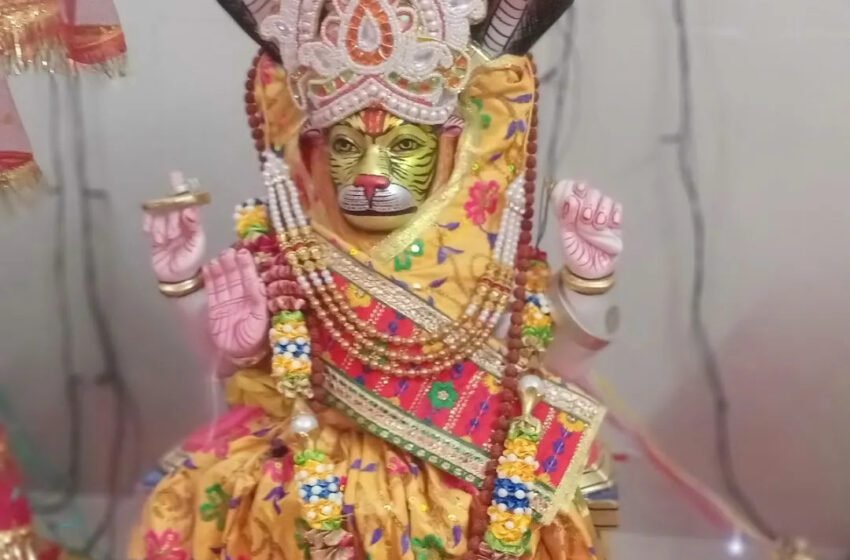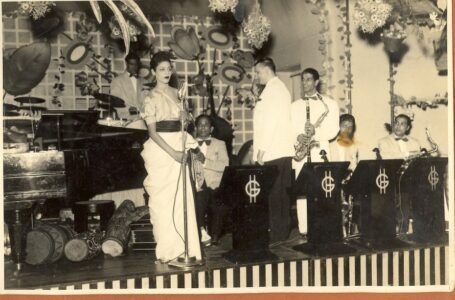Narsingh Devta: The Divine Protector in the Avatar of Justice

Narsingh Devta: The Divine Protector in the Avatar of Justice
Narsingh Devta, venerated across the length and breadth of India, is depicted as one of the most fearsome incarnations of Lord Vishnu. He has a face that combines that of a man and a lion, with close associations to justice and protection against evil forces. His somewhat paradoxical form-type, combining fury with tenderness, manifests itself as providing the help of divine intervention in the restoration of universal equilibrium: add to that the fact that, while Narsingh Devta is worshipped in many areas, including the Himalayan foothills, he strayed from local territory to be a bulwark of the broader Hindu understanding of spirituality and mythology.
The legend of Narsingh Devta is suffused with deep moral and philosophical teachings. It is a story of faith tested, devotion rewarded, and the triumph of good over evil, which is the very essence of Vaishnavite traditions. Temples devoted to Narsingh Devta are often located in spiritually eminent and beautiful places, attracting both devotees and travellers.
History
Starting back to ancient times is the worship of Narsingh Devta, with his divine acts elaborately described in the holy scriptures of Purana and else. He is identified as one of the ten principal manifestations of Vishnu, collectively known as the Dashavatara. The Narsingh avatar enjoys special status as the 4th incarnation; appearing at Satya Yuga, he defends and saves the wise and supports dharma.
The temples for Narsingh Devta appeared as early as during the Gupta period, showing his rising status in Hindu worship. Adorned with exquisite carvings and sculptures, the temples embody stories depicting times of the Narsingh legacies, accentuating his role as a protector and saviour. These regional variations in architectural style are evident in temples present today, and U.P., Orissa, Karnataka, and Uttarakhand boast some major examples.
He became the central figure in the northern Indian religion, particularly in Uttarakhand and Himachal Pradesh areas. The Narsingh Temple in Joshimath, Uttarakhand, serves as an example of how his deep-rooted nature extends today. This temple is said to be one of the oldest ones in the region and is considered the winter seat of Lord Badrinath; thus, marking Narsingh Devta’s significance in Himalayan spirituality.
The further espousals of Vaishnavism in the medieval period greatly boosted the worship of Narsingh Devta when his legends were immortalized in the works of such saints or poets as Jayadeva. Nowadays, his temples have become much more than places of worship; they have served as places for the dissemination of arts and culture, and bonding of the communities.
Mythology
The mythology surrounding Narsingh Devta is deeply rooted in the scriptures, such as the Bhagavata Purana, Vishnu Purana, etc. The story in itself is an exemplary instance of divine justice along with the strength of allegiance.
The story opens with a powerful demon king, Hiranyakashipu, who was granted a boon by Lord Brahma which made him almost invincible. He could not die at the hands of man or beast, at night or in day, inside or outside, or with any weapon. Empowered with this boon, he unleashed tyranny upon the three worlds, ordering everyone to worship him as the supreme deity.
However, his son, Prahlada, remained steadfast against such tyranny, refusing to abandon his devotion to Lord Vishnu. Hiranyakashipu repeatedly tried to turn him against Lord Vishnu and punished him cruelly. When all means by which Hiranya Kashipu tried to make the child abandon his faith failed, he, in fury, asked Prahlada whether his God Lord Vishnu lived in the pillar before him. The son replied that He was everywhere. To this, the king turned to the pillar and mocked Vishnu, saying, “Oh! Is He here?”
With that statement, Divinity broke forth from the pillar as Narsingh, who was neither man nor beast. At the time of twilight, Narsingh dragged Hiranyakashipu up to the entrance of the palace, thus being neither inside nor outside. With his claws, which are neither weapon nor tool, Narsingh brought about the death of Hiranyakashipu. The act was divinely miraculous and restored the cosmic order; it punished Hiranyakashipu’s tyranny and rewarded Prahlada for his unflinching faith.
The tale of Narsingh Devta is full of myriad symbols. It stands for arrogance transgressed and faith communicated, with a vivid representation of Vishnu being the ultimate protector of virtue. It reiterates that there can be an incarnation of God anywhere and in unimaginable forms to restore order and harmony in creation.
Cultural and Regional Significance
The worship of Narsingh Devta is not confined to any one locality; rather, it extends over the length and breadth of India he is somewhat of a universal personality. Narsingh Devta is considered a guardian deity in northern India, particularly in the Himalayan states, who protect villages and communities from evil. Usually, the temples of Narsingh serve as centres for community festivals, gatherings, and rituals.
In Odisha, the Narsingh avatar is closely associated with the Jagannath cult, and images of Narsingh can be seen on the walls of the Jagannath Temple in Puri. During the festivals, Chhena Poda (a traditional Odia sweet) is offered to Narsingh Devta as a special bhog.
In South India, the avatar of Narsingh is glorified in different temples like the Lakshmi Narasimha Swamy Temple in Andhra Pradesh and the Ahobilam Temple in Tamil Nadu. These temples are architectural jewels, adorned with exquisite sculptures and carvings that tell the tale of his legend.
Festivals in honour of Narsingh Devta, such as Narasimha Jayanti, are celebrated with great devotion. Devotees fast, sing hymns and bhajans and perform special rituals in honour of the deity. These festivals underscore his role as a protector-nurturer, acting for unity and devotion among his followers.
Rituals and Worship Practices
In the worship of Narsingh Devta, rituals are elaborate, with an emphasis on devotion, protection, and gratitude. Offerings to the deity daily include flowers, incense, and naivedya (food offerings) accompanied by the chanting of the Vishnu Sahasranama and other sacredly recognized texts. Among the temple happenings, the evening aarti is one of the most emotive moments, anointed with the sound of bells and chants echoing through the temple.
Special rituals are observed on the day of Narasimha Jayanti, the day of Narsingh’s appearance. Devotees observe fasts, meditate, and perform public prayers to seek his blessing on them for courage, health, and prosperity. The rituals normally include the dramatic re-enactment of the Narsingh legend, which gives life to the story and reinforces its moral and spiritual teachings.
In the Himalayan regions, Narsingh Devta is deified as a village deity, having unique occurrences to local practice. The worship involves animal sacrifices, folk dance, and worship in the form of offering agricultural produce to reflect the assimilation of his worship with local traditions and livelihoods.
Impact on Indian Spirituality and Philosophy
The conscious effort of Narsingh Devta spreads to the farthest corners of the Indian domain and on to Indian spirituality and philosophy as a disambiguated manifestation. His saga condenses down too many of those beliefs that constitute Hindu thought; simpler ideas of dharma (cosmos order), bhakti (devotion), and omnipresence of the Divine.
Philosophically the Narsingh avatar challenges standard notions of identity and form, hinting that the Divine exists quite beyond human comprehension. As a half-man, half-lion figure, he mystically transcends both form and identity, serving as a metaphor representing the infinite possibilities of divinity’s expressions and its intervention.
The various stories of Prahlada and Narsingh aim towards faith and humility, conveying universal messages for spiritual seekers through the ages. Such harmless tales implore believers to become strong on the solid ground of faith even against the earthquakes of duress and nurture a belief in the over-the-edge protection of the Divine by them.
Conclusion
Narsingh Devta symbolizes the herald of divine justice and eternal faith. His story has inspired millions across the ages and touched the farthest reaches of the globe. Conceived at the beguiling mythological stage, it continues to herald our modern-day followers down through centuries for solace, guidance, and protection.
Through his temples, rituals and festivals, Narsingh Devta remains an ever-lively element in the spiritual and cultural realm of India. The combination of ferocity and compassion in his unique avatar serves as a reminder of how the Divine adapts and answers its devotees with love and care.
While we continue this memory of Narsingh Devta, our recognition pays homage to not just a deity but an everlasting symbol of hope, faith, strength and the victory of good over evil. His legacy challenges and coaxes into optimistic retrospective consideration of faith and humility to the might-tuition wherein vengeance is followed through, to keep his story compelling, as relevant today as it was eons before.
Narsingh Devta, venerated across the length and breadth of India, is depicted as one of the most fearsome incarnations of Lord Vishnu. He has a face that combines that of a man and a lion, with close associations to justice and protection against evil forces. His somewhat paradoxical form-type, combining fury with tenderness, manifests itself as providing the help of divine intervention in the restoration of universal equilibrium: add to that the fact that, while Narsingh Devta is worshipped in many areas, including the Himalayan foothills, he strayed from local territory to be a bulwark of the broader Hindu understanding of spirituality and mythology.
The legend of Narsingh Devta is suffused with deep moral and philosophical teachings. It is a story of faith tested, devotion rewarded, and the triumph of good over evil, which is the very essence of Vaishnavite traditions. Temples devoted to Narsingh Devta are often located in spiritually eminent and beautiful places, attracting both devotees and travellers.
History
Starting back to ancient times is the worship of Narsingh Devta, with his divine acts elaborately described in the holy scriptures of Purana and else. He is identified as one of the ten principal manifestations of Vishnu, collectively known as the Dashavatara. The Narsingh avatar enjoys special status as the 4th incarnation; appearing at Satya Yuga, he defends and saves the wise and supports dharma.
The temples for Narsingh Devta appeared as early as during the Gupta period, showing his rising status in Hindu worship. Adorned with exquisite carvings and sculptures, the temples embody stories depicting times of the Narsingh legacies, accentuating his role as a protector and saviour. These regional variations in architectural style are evident in temples present today, and U.P., Orissa, Karnataka, and Uttarakhand boast some major examples.
He became the central figure in the northern Indian religion, particularly in Uttarakhand and Himachal Pradesh areas. The Narsingh Temple in Joshimath, Uttarakhand, serves as an example of how his deep-rooted nature extends today. This temple is said to be one of the oldest ones in the region and is considered the winter seat of Lord Badrinath; thus, marking Narsingh Devta’s significance in Himalayan spirituality.
The further espousals of Vaishnavism in the medieval period greatly boosted the worship of Narsingh Devta when his legends were immortalized in the works of such saints or poets as Jayadeva. Nowadays, his temples have become much more than places of worship; they have served as places for the dissemination of arts and culture, and bonding of the communities.
Mythology
The mythology surrounding Narsingh Devta is deeply rooted in the scriptures, such as the Bhagavata Purana, Vishnu Purana, etc. The story in itself is an exemplary instance of divine justice along with the strength of allegiance.
The story opens with a powerful demon king, Hiranyakashipu, who was granted a boon by Lord Brahma which made him almost invincible. He could not die at the hands of man or beast, at night or in day, inside or outside, or with any weapon. Empowered with this boon, he unleashed tyranny upon the three worlds, ordering everyone to worship him as the supreme deity.
However, his son, Prahlada, remained steadfast against such tyranny, refusing to abandon his devotion to Lord Vishnu. Hiranyakashipu repeatedly tried to turn him against Lord Vishnu and punished him cruelly. When all means by which Hiranya Kashipu tried to make the child abandon his faith failed, he, in fury, asked Prahlada whether his God Lord Vishnu lived in the pillar before him. The son replied that He was everywhere. To this, the king turned to the pillar and mocked Vishnu, saying, “Oh! Is He here?”
With that statement, Divinity broke forth from the pillar as Narsingh, who was neither man nor beast. At the time of twilight, Narsingh dragged Hiranyakashipu up to the entrance of the palace, thus being neither inside nor outside. With his claws, which are neither weapon nor tool, Narsingh brought about the death of Hiranyakashipu. The act was divinely miraculous and restored the cosmic order; it punished Hiranyakashipu’s tyranny and rewarded Prahlada for his unflinching faith.
The tale of Narsingh Devta is full of myriad symbols. It stands for arrogance transgressed and faith communicated, with a vivid representation of Vishnu being the ultimate protector of virtue. It reiterates that there can be an incarnation of God anywhere and in unimaginable forms to restore order and harmony in creation.
Cultural and Regional Significance
The worship of Narsingh Devta is not confined to any one locality; rather, it extends over the length and breadth of India he is somewhat of a universal personality. Narsingh Devta is considered a guardian deity in northern India, particularly in the Himalayan states, who protect villages and communities from evil. Usually, the temples of Narsingh serve as centres for community festivals, gatherings, and rituals.
In Odisha, the Narsingh avatar is closely associated with the Jagannath cult, and images of Narsingh can be seen on the walls of the Jagannath Temple in Puri. During the festivals, Chhena Poda (a traditional Odia sweet) is offered to Narsingh Devta as a special bhog.
In South India, the avatar of Narsingh is glorified in different temples like the Lakshmi Narasimha Swamy Temple in Andhra Pradesh and the Ahobilam Temple in Tamil Nadu. These temples are architectural jewels, adorned with exquisite sculptures and carvings that tell the tale of his legend.
Festivals in honour of Narsingh Devta, such as Narasimha Jayanti, are celebrated with great devotion. Devotees fast, sing hymns and bhajans and perform special rituals in honour of the deity. These festivals underscore his role as a protector-nurturer, acting for unity and devotion among his followers.
Rituals and Worship Practices
In the worship of Narsingh Devta, rituals are elaborate, with an emphasis on devotion, protection, and gratitude. Offerings to the deity daily include flowers, incense, and naivedya (food offerings) accompanied by the chanting of the Vishnu Sahasranama and other sacredly recognized texts. Among the temple happenings, the evening aarti is one of the most emotive moments, anointed with the sound of bells and chants echoing through the temple.
Special rituals are observed on the day of Narasimha Jayanti, the day of Narsingh’s appearance. Devotees observe fasts, meditate, and perform public prayers to seek his blessing on them for courage, health, and prosperity. The rituals normally include the dramatic re-enactment of the Narsingh legend, which gives life to the story and reinforces its moral and spiritual teachings.
In the Himalayan regions, Narsingh Devta is deified as a village deity, having unique occurrences to local practice. The worship involves animal sacrifices, folk dance, and worship in the form of offering agricultural produce to reflect the assimilation of his worship with local traditions and livelihoods.
Impact on Indian Spirituality and Philosophy
The conscious effort of Narsingh Devta spreads to the farthest corners of the Indian domain and on to Indian spirituality and philosophy as a disambiguated manifestation. His saga condenses down too many of those beliefs that constitute Hindu thought; simpler ideas of dharma (cosmos order), bhakti (devotion), and omnipresence of the Divine.
Philosophically the Narsingh avatar challenges standard notions of identity and form, hinting that the Divine exists quite beyond human comprehension. As a half-man, half-lion figure, he mystically transcends both form and identity, serving as a metaphor representing the infinite possibilities of divinity’s expressions and its intervention.
The various stories of Prahlada and Narsingh aim towards faith and humility, conveying universal messages for spiritual seekers through the ages. Such harmless tales implore believers to become strong on the solid ground of faith even against the earthquakes of duress and nurture a belief in the over-the-edge protection of the Divine by them.
Conclusion
Narsingh Devta symbolizes the herald of divine justice and eternal faith. His story has inspired millions across the ages and touched the farthest reaches of the globe. Conceived at the beguiling mythological stage, it continues to herald our modern-day followers down through centuries for solace, guidance, and protection.
Through his temples, rituals and festivals, Narsingh Devta remains an ever-lively element in the spiritual and cultural realm of India. The combination of ferocity and compassion in his unique avatar serves as a reminder of how the Divine adapts and answers its devotees with love and care.
While we continue this memory of Narsingh Devta, our recognition pays homage to not just a deity but an everlasting symbol of hope, faith, strength and the victory of good over evil. His legacy challenges and coaxes into optimistic retrospective consideration of faith and humility to the might-tuition wherein vengeance is followed through, to keep his story compelling, as relevant today as it was eons before.


